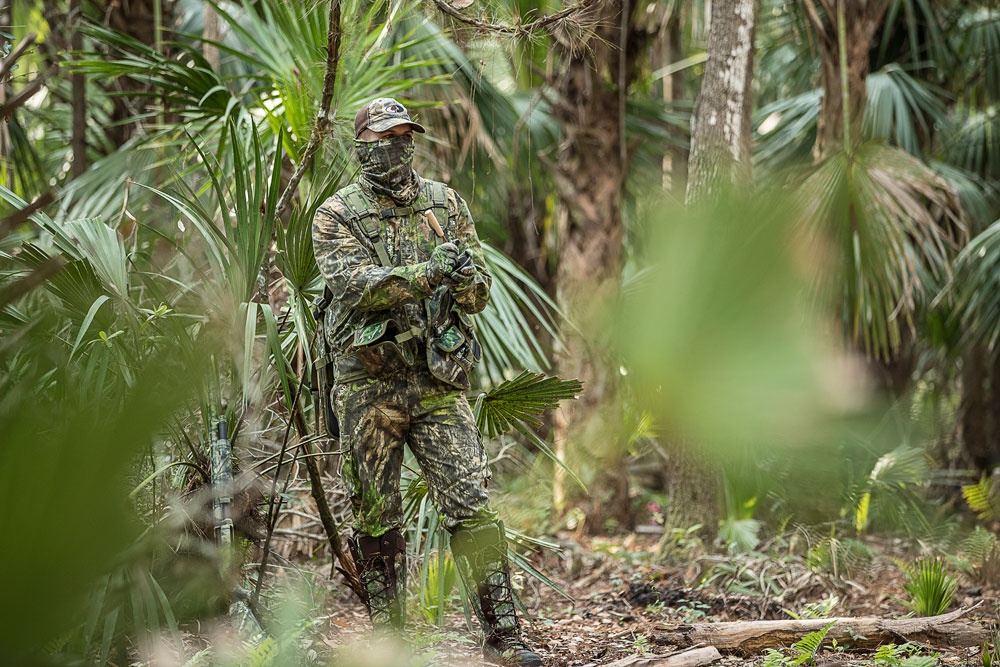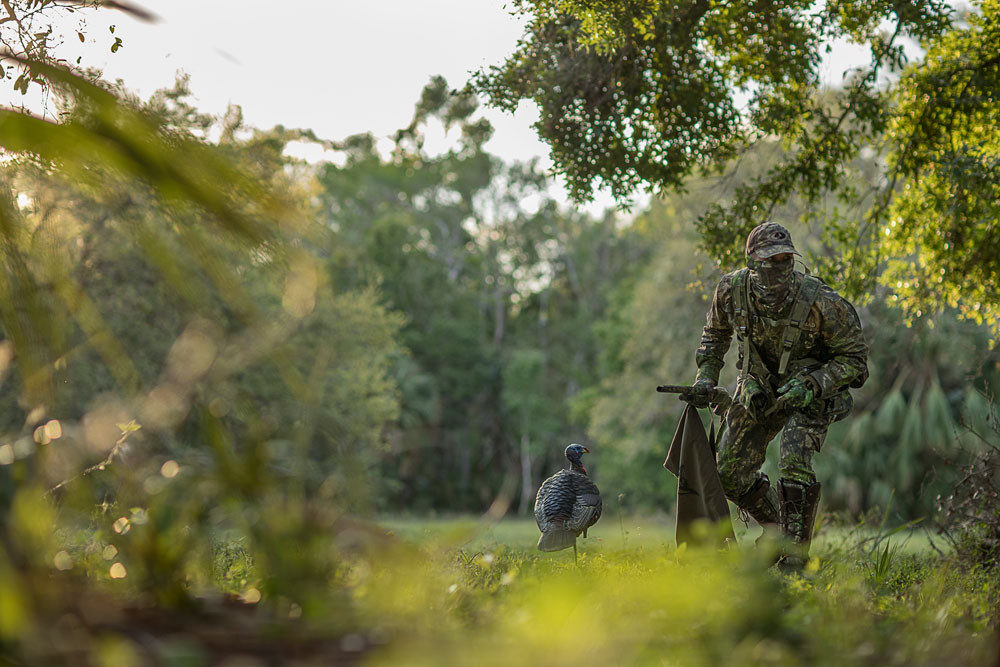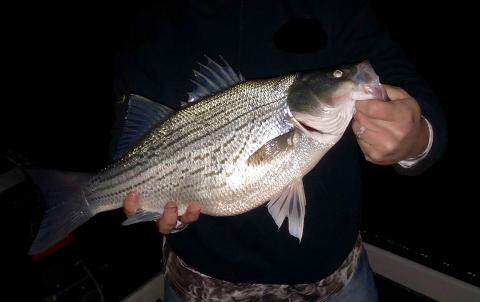Scott Ellis
Often a gobbler or hen’s mood can be influenced by certain styles of calling. Capitalizing on a turkey’s emotions can often produce results. Knowing how to identify their mood and call accordingly will often bring turkeys into your setup. Employing well-timed calling sequences can be the key difference in a close encounter or a distant pass by. Throughout the spring, a gobbler is a bundle of pure testosterone-driven emotion. Once you’ve made initial contact with your tom, observe what type of mood he is in. Is he gobbling at crows, hawks, owls and other shock type calls? Is he already in a heightened emotional state or is he seemingly in a bland mood but answering your calls sporadically? Quickly make this assessment at the beginning of your hunt. This is the first step in identifying which calling tactics to employ on the gobbler.

Excite him!
Although basic hen yelping has probably harvested more turkeys than any other call, there are times when it is just not enough to seal the deal. When you are engaging your tom, if he is seemingly bland and non-responsive it’s time to become aggressive. Begin your calling sequences with some cutting and then speed up the rhythm of your yelping to create an excited yelp. This type of calling will sometimes increase his breeding urge. The hunter is conveying that the hen the gobbler is hearing is ready to breed and if he closes the distance, he will be rewarded with a mate. The key is to always start with the basics and then pick up the excitement level as needed. If you bombard him with everything you have at the start of the engagement, you will have nothing left in your repertoire to entice him into gun range.
The Silent Treatment
There comes a time when the silent approach is the medicine needed to cool down a super-hot tom. You may have excited him with your aggressive calling and super-charged his mood for love, but this only caused him to stand his ground. With this strategy you are giving the illusion that the hen has lost interest and has simply given up on their rendezvous. One of the easiest ways to accomplish this task is to simply cease all calling. It is imperative to not utter a sound for approximately 15 to 20 minutes. If the gobbler begins gobbling on his own, he is getting anxious and is trying to elicit a response from his girlfriend. Often times this is the last stage as the bird begins to close the distance to the hunter. Another key note is if the gobbler ceases to gobble. There are two scenarios that will generally occur. He will either close the distance to the hunter without making a sound, or he will lose interest and move on. After 15-20 minutes have transpired and the gobbler has not slipped in, attempt to locate him with a loud burst from your crow or hawk (locator) call. If he responds but has moved away, it is time to reposition. Identify his position only with your locator call as you move on him. This will enable you to course his direction and set up on his travel route without using hen sounds. At this point I would not call to the gobbler. Simply allow him pass by in gun range.
Fire Him Up and Shut It Down
Another tactic I’ve enjoyed great success with involves both aggressive, excited calling and the coy, timid approach. Many gobblers have met their demise because of the “fire him up and shut him down” calling tactic. Begin your excited calling sequences and take note as the gobbling starts to increase in frequency. Once you have hooked him, give him about 10 minutes of silence. Be wary of his rapid approach as this sometimes is all it takes to seal the deal. If the short period of silence does not bear fruit, start clucking and purring. If possible, simulate scratching in the leaves. But be cognizant of any movement that could spook the tom. More times than not, the gobbler cannot stand the fact that his once hot and excited girlfriend has lost interest in his majesty’s gobbling and strutting. You have set the mood for love, but then retracted your invitation to meet.
Talking To the Hens
When a gobbler is courting his harem of hens, they too can play a role in setting the mood of the hunt. Two factors that can lead to success hinges on a hen turkey’s gregarious or aggressive nature. Once I have identified that a gobbler is in the presence of the lady’s and that he is not going to leave his company, the game begins. The first step in utilizing this strategy is to begin initial contact with the boss hen in the flock. As a rule of thumb, never challenge her initially with aggressive calling. Begin your conversation with a few clucks followed by a 5-6 note yelp. This is just an attempt to say “hello, how are you doing?” You are capitalizing on her gregarious nature and simply announcing your presence. Hopefully she will wander over with the tom in tow, just to visit the new comer.
If this is not successful after two or three attempts, it is time to begin the challenging part of the strategy. In this scenario you will become aggressive with your calling in an attempt to question her dominance. I will generally begin with a 10-15 second cutting sequence followed by a 6-8 note yelp with a more rapid cadence. Once you have completed your series, await her response. If she answers with a similar response, you have piqued her interest and success could be in your future. Again respond back with another sequence imitating her as closely as possible. After two or three sets of calling with responses, begin calling over top of her calling. This should stimulate her into a dominate mode and you have set the mood for confrontation. This will hopefully end up with her approaching your set up infuriated by the newcomer challenging her dominance within the flock. At this point, the tom will usually follow her right into gun range.

Simulate an Intruder
When you’ve made every attempt in setting the mood of the hunt with hen calling, there is one last resort that can lead to success. In certain circumstances you may be engaged in battle with the dominate bird in the area. There is no fool proof way of determining his status but when all else fails, it is worth a try. Challenging the gobbler and imitating the presence of another male can sometimes change the gobbler’s mood from love to anger. I generally begin announcing the intrusion of the other long beard by spitting and drumming. I will produce this sound in a couple of series of three and then await the gobbler’s reaction. This simulates a gobbler has approached the hens and could hinder the bird you have engaged from breeding. You’re conveying that another tom has snuck in the back door and is attempting to win the ladies’ love. If you could read the dominate gobbler’s mind, I think he would view this as underhanded. I have had many birds charge a set up once I have simulated this sound.
If you do not get a reaction from spitting and drumming, I will then produce a throaty gobble. I use my natural voice but there are many companies who manufacture gobble calls. If he answers, I continue to gobble back at him and even gobble over the top of his gobble. Gobble as much as needed to bring him into range. Keep in mind that he could gobble all the way into your setup or he could sneak in quietly. If he was gobbling at your hen calling prior to your gobbling and he then goes silent, scan for his arrival. I have had many toms slip in quietly once I have begun challenging them. The flip side to this tactic is sometimes the bird will feel challenged but is avoiding confrontation. He could very easily cease gobbling and head the other direction. Just remember this is a last ditch effort and there is nothing lost at this point. Take great caution when employing the gobble as it could attract other hunters and key them on your exact position.
Conclusion
Vocalizations are the wild turkeys number one means for communication. Take the time to learn the 5 calls mentioned throughout this article and be able to reproduce them effortlessly. These calls are clucking and purring, yelping, cutting, excited yelping and the gobble. All of the above mentioned tactics require the ability to create these sounds. There are many web-based digital recordings of turkeys that you can utilize to assist in learning them. I cannot stress how imperative it is to learn these sounds. They are the necessary tools to set the mood for your hunt this spring.






























